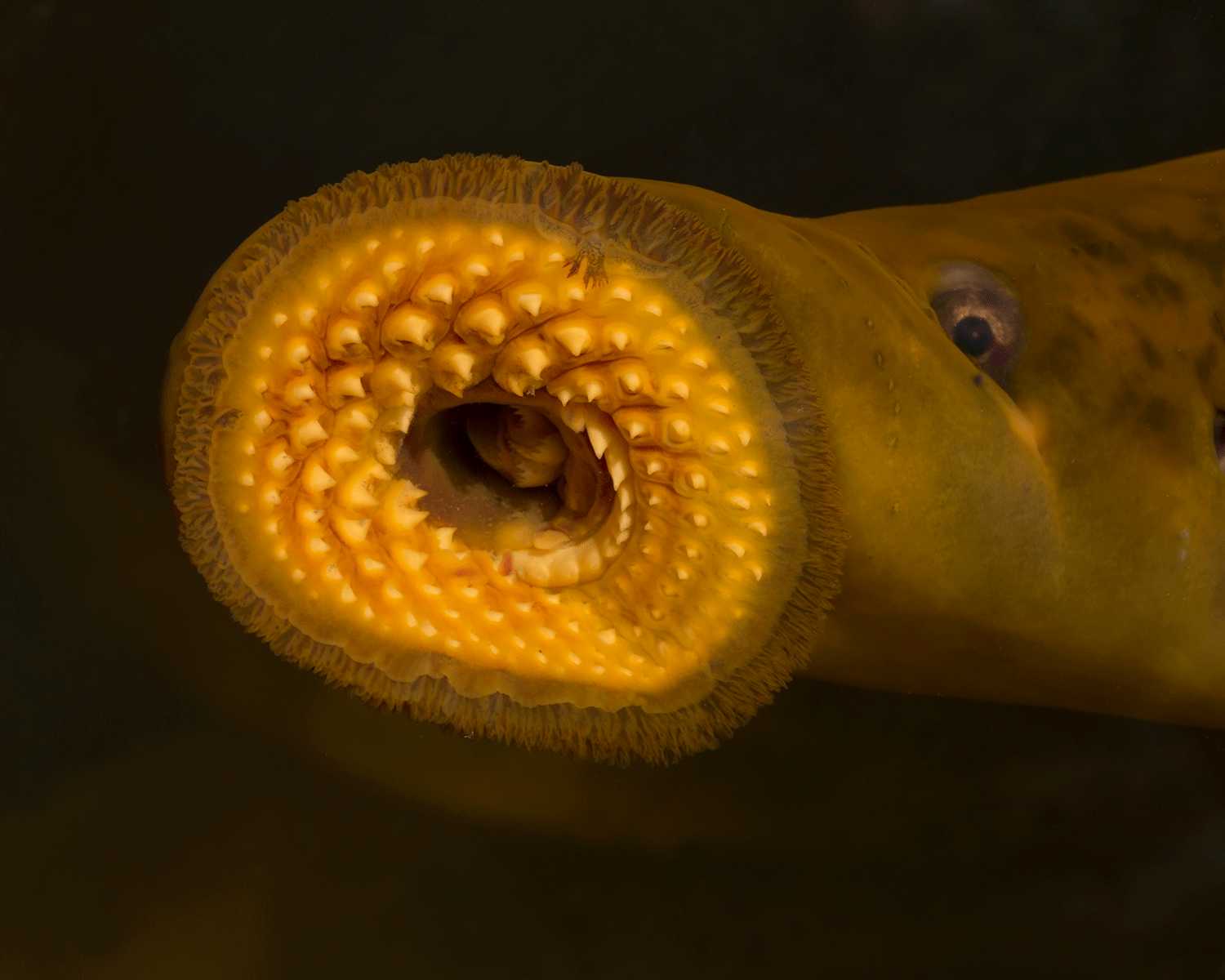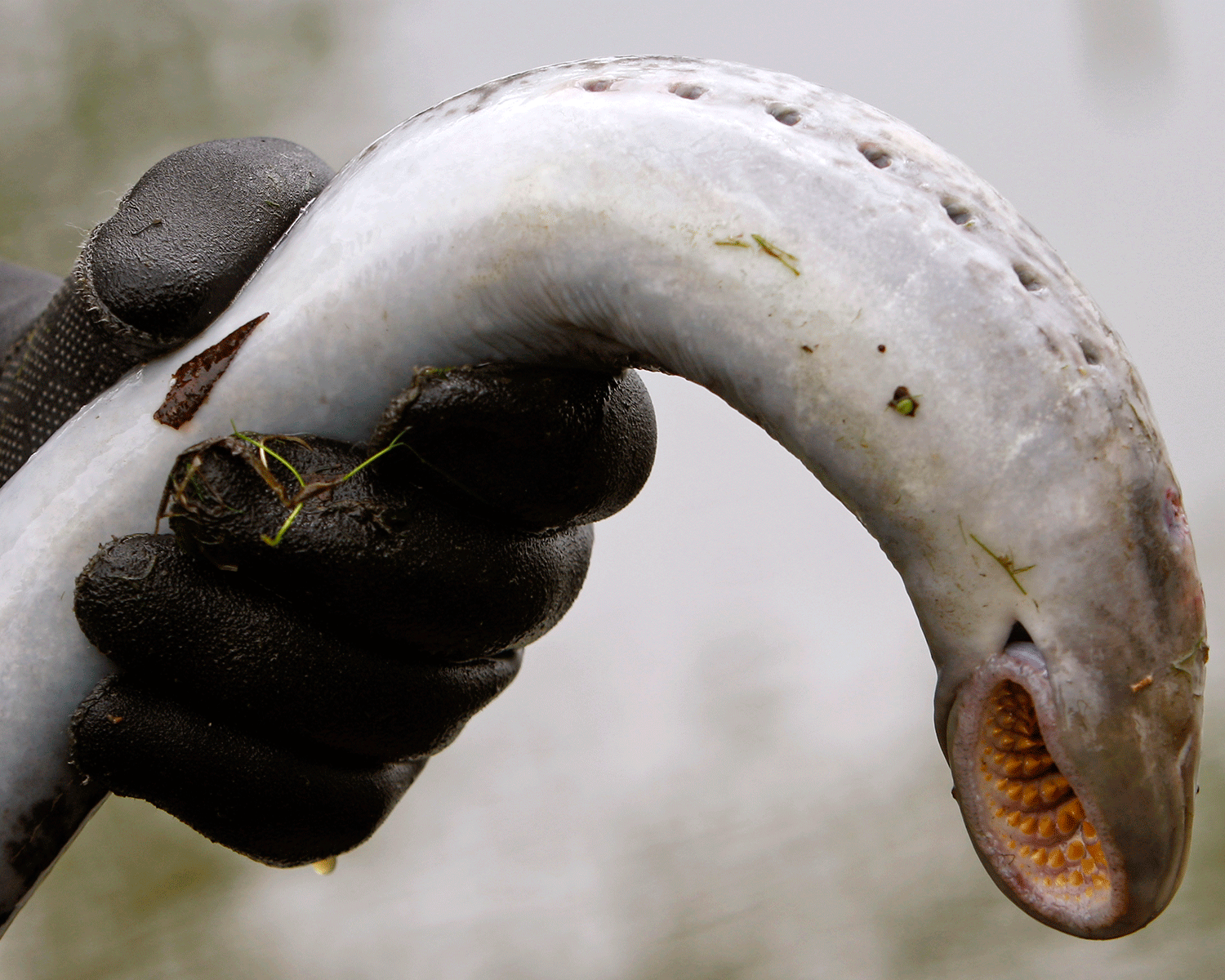Blood-sucking lamprey fish that pre-dates dinosaurs 'returns to British rivers'
The male wraps himself around the female and 'squeezes' her until she lays about 170,000 eggs

Your support helps us to tell the story
From reproductive rights to climate change to Big Tech, The Independent is on the ground when the story is developing. Whether it's investigating the financials of Elon Musk's pro-Trump PAC or producing our latest documentary, 'The A Word', which shines a light on the American women fighting for reproductive rights, we know how important it is to parse out the facts from the messaging.
At such a critical moment in US history, we need reporters on the ground. Your donation allows us to keep sending journalists to speak to both sides of the story.
The Independent is trusted by Americans across the entire political spectrum. And unlike many other quality news outlets, we choose not to lock Americans out of our reporting and analysis with paywalls. We believe quality journalism should be available to everyone, paid for by those who can afford it.
Your support makes all the difference.A blood-sucking parisitic fish that can grow up to one metre long is returning to British rivers.
The lamprey, which evolved more than 360 million years ago and has barely changed since, is becoming more prevalent in the Great Ouse, Trent, Derwent, Wear and other rivers as man-made barriers are removed and water quality improves.
An eel-like fish with a jawless, circular mouth, some species of the adult lamprey attach themselves to the side of species such as trout, herring and even basking sharks and draw on their blood and body fluid until its host either dies or is left with a large wound.
Despite a repugnant appearance and - in some parts of the world - devastating effect on fish populations, the lamprey's squid-like flesh was considered a delicacy by various kings and queens and features on menus in the Games of Thrones series.
Its revival has been hailed as a "symbol" of better water flowing through Britain's rivers today.

Mark Owen, head of freshwater at the Angling Trust, told The Independent: "It's what this symbolises that matters.
"The fact they're coming back indicates the water quality is improving, which is welcome for all fish species."
Sea, brook and river lamprey, which are protected in the UK, have also suffered in the last century from man-made barriers such as weirs which prevented their migratory return to breeding grounds, and a lack of clean gravel-bottomed rivers for laying eggs in.
"There's a policy now of having fish passes in man-made weirs, like a bypass channel for them to go through," said Mr Owen.
"But they are not a threat to our own fish".
Now a protected species in the UK, the lamprey was once a delicacy among British monarchs.
King Henry I is rumoured to have died of a "surefeit of lampreys" and a lamprey pie has been sent by the town of Gloucester to the reining king or queen until as recently as 2006 when they were considered too rare to be fished.
When left uncontrolled such as in the Great Lakes of North America, however, one lamprey can kill off 40 fish a year and, by breeding in vast quantities, become a pest.
The male sea lamprey causes the female to lay somewhere in the region of 170,000 eggs by wrapping himself around her and "squeezing" her until she lays.
And although they die shortly after mating, their method of survival has been successful enough for them to have barely changed, along with similar species such as the hagfish, from the time of the dinosaurs some 360 million years ago.
Join our commenting forum
Join thought-provoking conversations, follow other Independent readers and see their replies
Comments